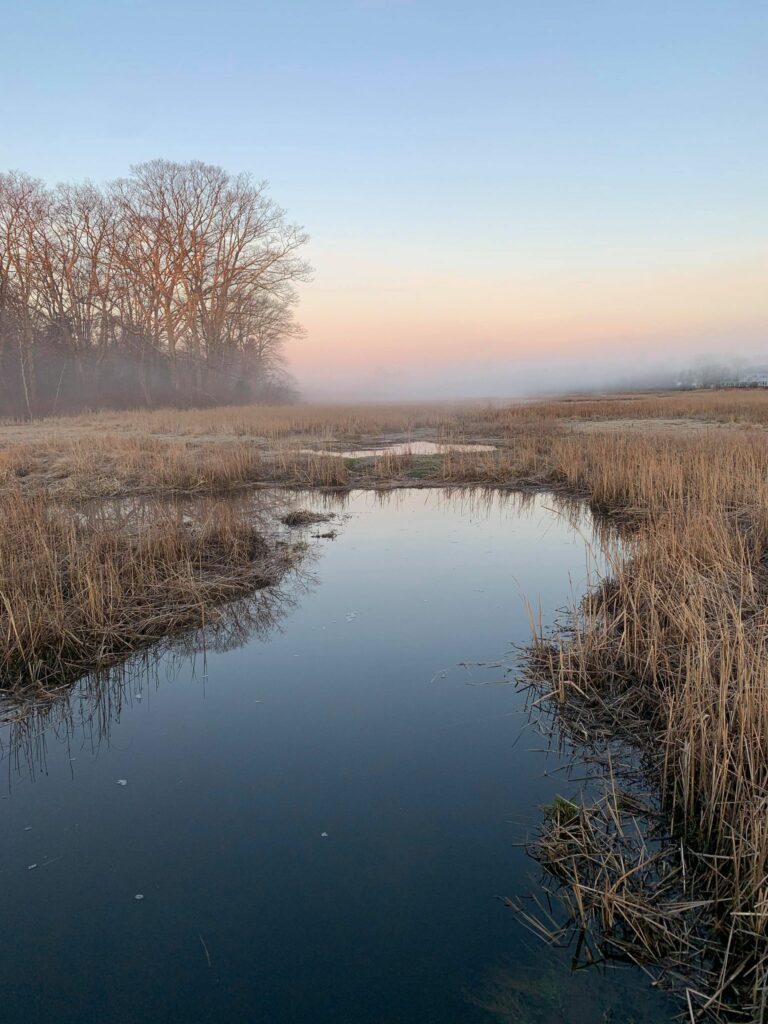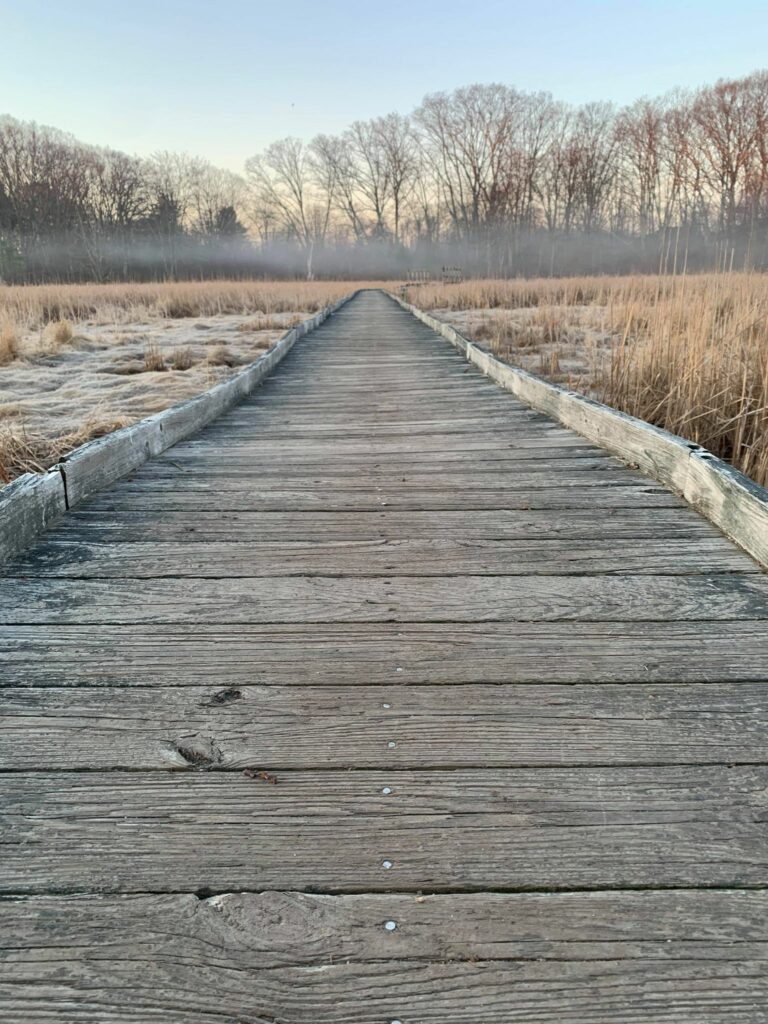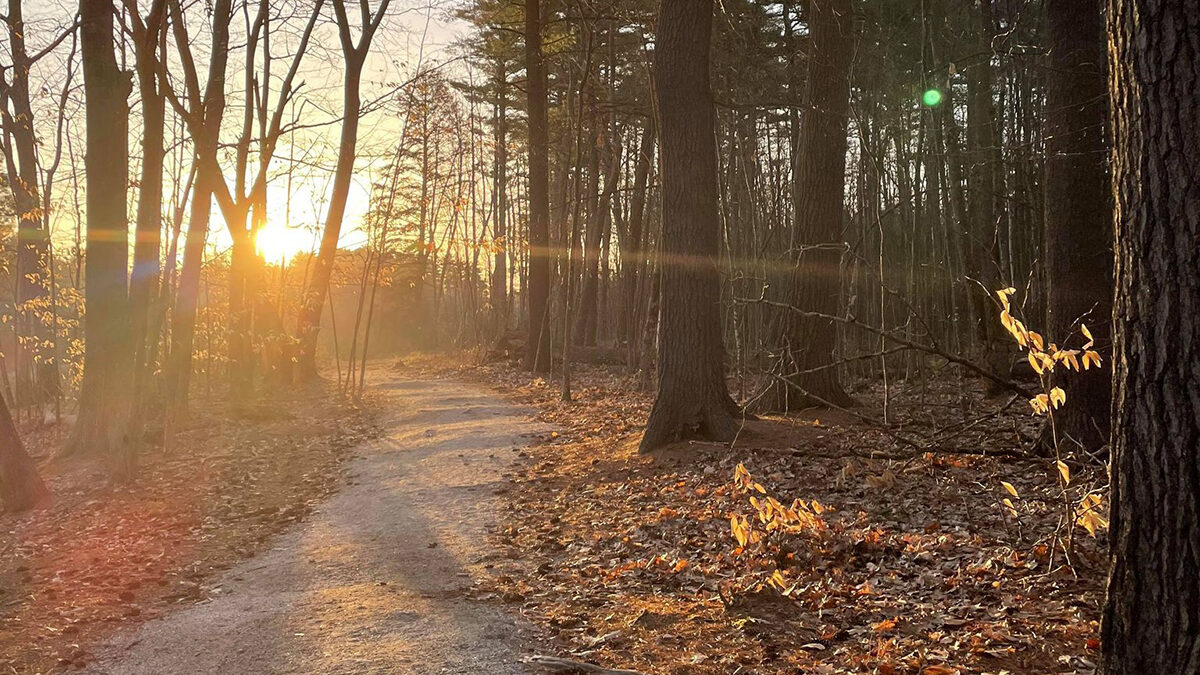Trail Talk
While a mild Maine winter started the trail season a little early, it’s officially the most wonderful time of the year for avid trail runners, hikers and bikers. The little remaining snow and ice have cleared, leaving trails mostly passable and ready for a busy year. However, before you lace up your trail shoes and liberally douse yourself in bug spray, take a moment to brush up on some trail etiquette.
 Don’t leave your takeout on the trail
Don’t leave your takeout on the trail
In the past week alone I’ve caught my puppy trying to sneak a plastic “Chill Zone” cup (shout out to the nearby Cumberland Farms), a tissue and (of course) a face mask into his mouth. This leads me to the conclusion that many don’t understand what “do not litter” means. This basic rule of existing as an adult in our society seems easy enough to follow, and yet, every trail trip yields a bounty of unwanted recyclables and trash left for others to enjoy. Take it from someone who knows – not only is littering incredibly detrimental to the environment, but I already have my hands full trying to wrestle sticks, crab shells, a leftover oyster from a seagull dinner and the occasional dead field mouse out of the jaws of my dogs. Please don’t make me touch a dirty tissue as well. The trash bin is so close – please throw it away. Don’t get me started on your dog’s waste, either. It’s a significant environmental issue when many people let many dogs leave their poop behind. Bothering to bag it up? Then bother to take the bag out with you. It’s unacceptable how much bagged dog poop there is on the trails. Sometimes you gotta go, but please either bury or bag your human poop, as well. No one needs their dog eating or rolling in human feces.
Who has the right of way?
It’s simple, horses first, then pedestrians, then anyone on wheels. I get that bombing down the trail on your tricked out mountain bike is awesome, dude, but it’s also dangerous around corners or down hills when you might not realize there’s a loose dog or recreational hiker in the right of way. It’s the bikers who should yield, even though pedestrians often do, just because it’s their first reaction. Bottom line, riders give ample warning and space to runners and hikers, and slow down on trails unless you’ve got good sightlines.
Keep them on a short leash
Let’s talk about our dog friends. If it’s an unleashed area – go for it, but keep them under voice control. Communicate to other dog owners, walkers and riders about your dogs – if they’re off leash, if they’re friendly to humans and other pup friends, etc. If the area is leashed, it goes without saying to respect the rules of the trails – especially since some areas are protected habitats for birds, or where other landscape considerations are being taken. It’s also appreciated to be a good trail citizen and hold your dog if someone else is using the trail with a leashed dog that is reactive. The trails are big enough for everyone, and it’s just common courtesy to acknowledge a polite request.
Don’t play in the mud
While any seasoned New Englander knows that venturing out on trails in spring will result in a literal mud bath, we strongly suggest taking great care. While mud might be hard to avoid, trail closure signs to prevent erosion of the flora and fauna surrounding the trails aren’t. In fact, they’re usually quite clearly marked. When attempting to evade a mud pit, be aware of your footing and whether you’re going too far off trail and causing greater erosion. If the trail is marked closed, or simply too muddy to pass, a little patience is in order. The trail will eventually dry and you’ll once again be able to traverse it. Same goes for your urge to place rocks or sticks over a mud hole. The water always wins, and nature will simply go around your makeshift crossing, thus enlarging the muddy area, and making the situation worse.

Don’t take up the whole trail
Everyone has a different definition of “hiking” or trail use, but if you are out on a trail with friends or family, please be aware, and don’t walk side by side and take up the entire trail as others are coming by. It’s not fun to have to navigate the undergrowth to get around you, the ground is uneven, not to mention the likelihood of picking up some ticks as soon as you step off the beaten path. Ground bees often nest to the side of trails, too, and they really don’t appreciate it when humans disturb their nests. Likewise, if you choose to wear headphones in the woods, please be extra attentive to traffic from ahead or behind you, for your safety as well as others.
There’s no better place to be than in the woods, and while it may feel like you’re miles away from everyone, you most likely aren’t. A few extra moments of care make the experience better for everyone!

